Tanning is ancient. As long as mankind has processed animals for food, people have used other parts, notably hides, for clothing, saddles, quivers, bags and a whole range of other products. It was discovered long ago that raw hide could be made into more durable and hard-wearing leather by treatment with tannin, originally sourced from oak bark.
In Britain, since pre-Roman times, many villages would possess a tannery, usually located on the outskirts because of the odious smells that were often produced, and waste that was a lure to vermin. Failsworth tannery, close to the border with Newton, was probably founded in medieval times, but by the eighteenth century it was expanding.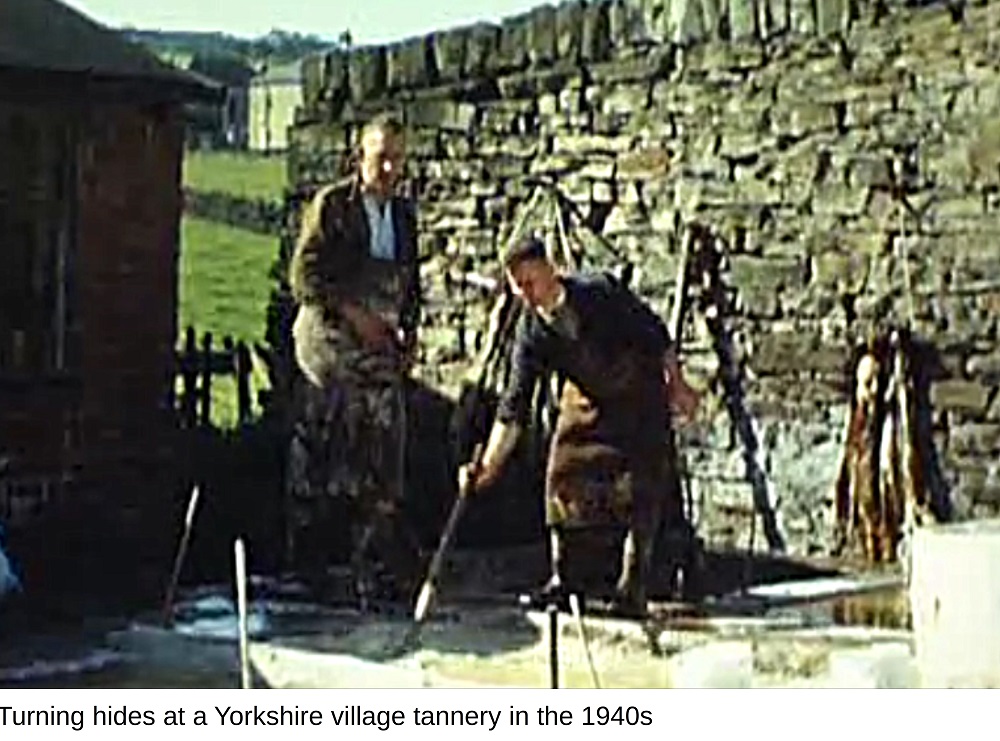 With the industrial revolution came a massive increase in demand for leather, not only for shoes and clothing for the growing population, but for the accoutrements of the steam age: belts to drive machinery, protective aprons, masks and gloves, piston glands and all manner of other bits and bobs. Thomas Kershaw was named as the tanner in Failsworth, when he married in October 1769, and took on an apprentice in 1771.
With the industrial revolution came a massive increase in demand for leather, not only for shoes and clothing for the growing population, but for the accoutrements of the steam age: belts to drive machinery, protective aprons, masks and gloves, piston glands and all manner of other bits and bobs. Thomas Kershaw was named as the tanner in Failsworth, when he married in October 1769, and took on an apprentice in 1771.
In 1821, the tannery was run by George Parkinson, who was then declared bankrupt, but it was soon acquired by Jonathan Mellor of Oldham, a tanner and dresser who also had a share in a cotton mill in Rochdale. His sons, Thomas and Edward, were also partners in the tannery. By 1844 they owned considerable land, between the Rochdale Canal and the Manchester Turnpike (now Oldham Road), on which the Marlborough Mills (and Mellor Street) were later built. In 1845, Thomas’s sister Mary married Edward Watkin, a staunch Anti-Corn Law Leaguer and later director of several railway companies, including the Great Central Railway.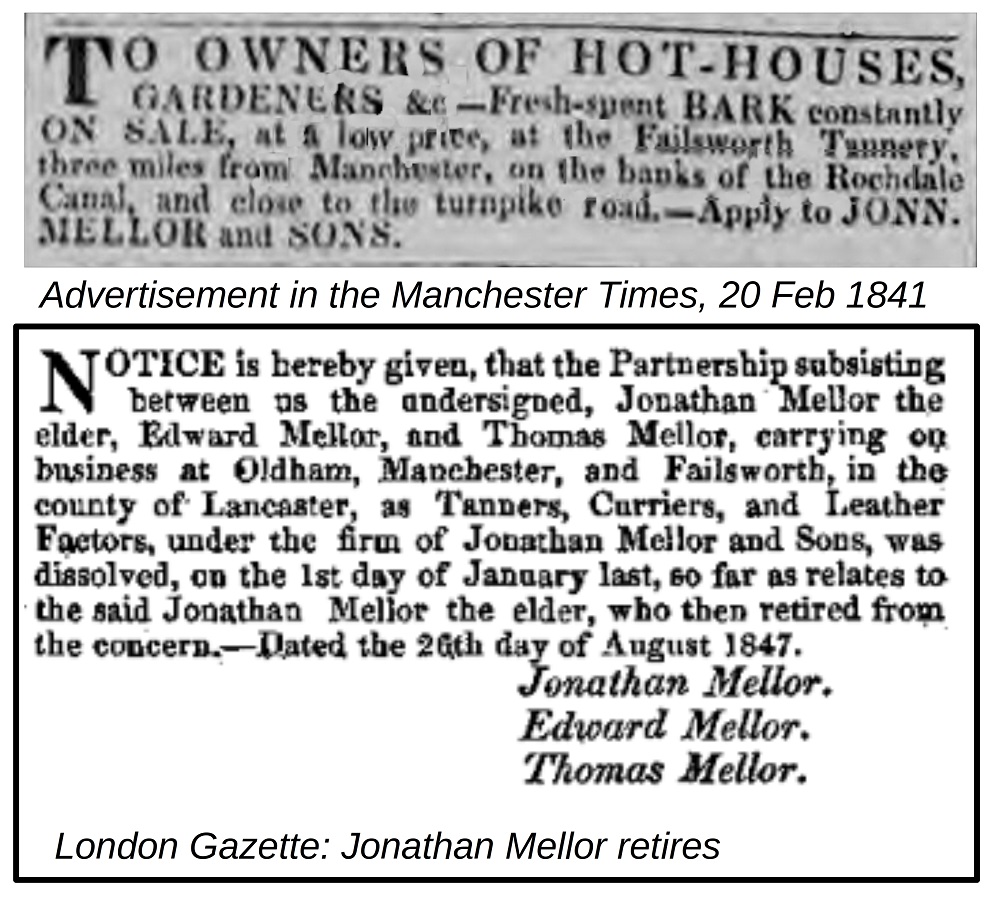 Jonathan retired in 1847, leaving the tannery in the capable hands of his sons; he died two years later and was buried at Oldham parish church, where he had held a pew since 1842. Edward decided to concentrate on the mill interests in Rochdale, leaving Thomas in sole charge of the tannery from 1854. Unlike his father, who had resided on King St, Oldham up to his death, Thomas moved to Failsworth, living at Rich Field House, Dob Lane, and later becoming a J.P. and Poor Law Guardian.
Jonathan retired in 1847, leaving the tannery in the capable hands of his sons; he died two years later and was buried at Oldham parish church, where he had held a pew since 1842. Edward decided to concentrate on the mill interests in Rochdale, leaving Thomas in sole charge of the tannery from 1854. Unlike his father, who had resided on King St, Oldham up to his death, Thomas moved to Failsworth, living at Rich Field House, Dob Lane, and later becoming a J.P. and Poor Law Guardian.
The tannery continued to thrive, with its main entrance on Poplar Street, but not without occasional setbacks. On 3 June 1858, thieves stole “40 foreign cow hides, worth £50” but were apprehended while trying to sell them through an agent in Manchester. On 29 September 1879, an inquest was held on the death of John Hughes, a plumber from Ancoats, who was repairing gas pipes at the tannery but fell into a pit containing a “hot chemical mixture”. He was terribly scalded and died a week later in the Infirmary, after admitting he had been “walking carelessly” beside one of the 400 pits and hadn’t realised the danger.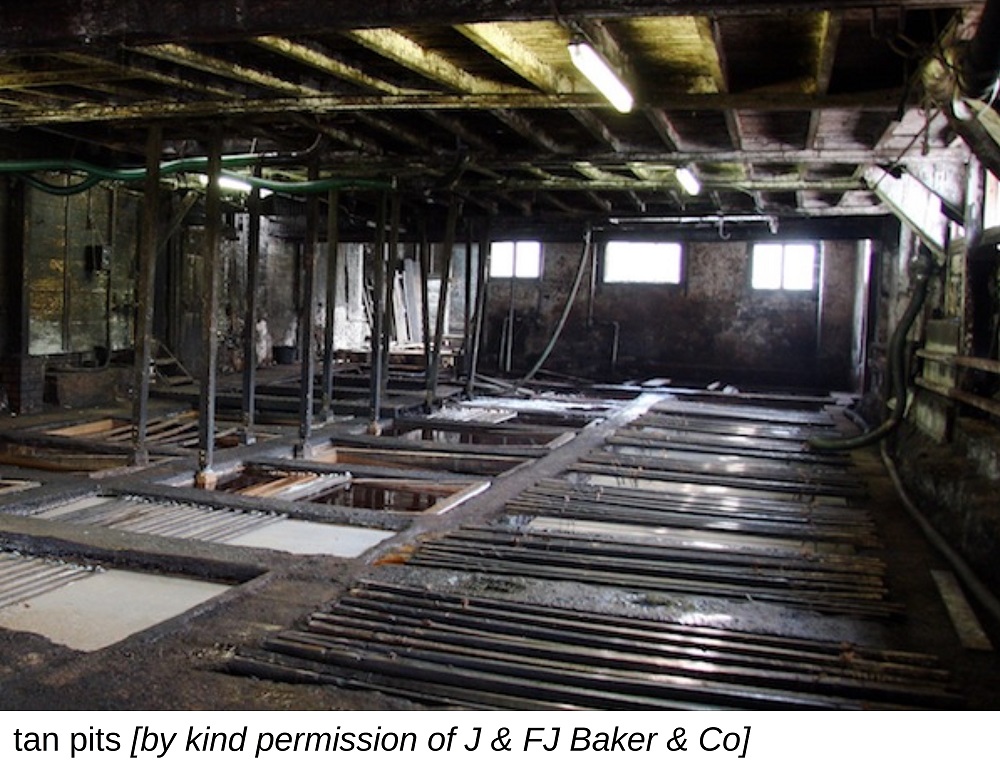 Around 1880, Thomas moved to Firs Hall, Failsworth, where he died in 1889, aged 81. Sir Edward Watkin (knighted in 1868) attended his funeral at Failsworth cemetery. His son, Robert, who had been born in Failsworth around 1853, took charge of the tannery, which then became “Robert Mellor Ltd”. In 1890, Robert married Eliza Melland of Bowdon, Cheshire, and moved to Disley.
Around 1880, Thomas moved to Firs Hall, Failsworth, where he died in 1889, aged 81. Sir Edward Watkin (knighted in 1868) attended his funeral at Failsworth cemetery. His son, Robert, who had been born in Failsworth around 1853, took charge of the tannery, which then became “Robert Mellor Ltd”. In 1890, Robert married Eliza Melland of Bowdon, Cheshire, and moved to Disley.
The tannery continued to appear in the newspapers from time to time, selling 80 iron plates and girders in 1899, a drowned man being found in the canal near the tannery in 1900 and, finally, in 1911 came the announcement of Robert’s death, aged 58, at Edgemoor, Buxton; his personal fortune was stated to be over £88,000.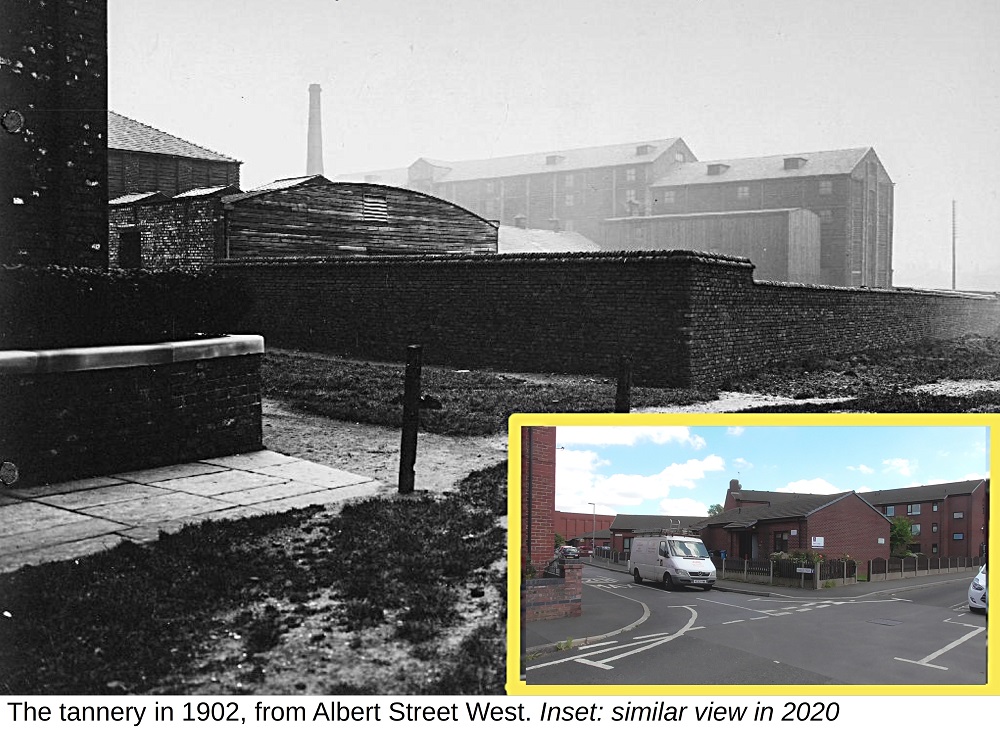 The firm continued as Robert Mellor Ltd after his death and was listed as ‘sole-leather tanners’ in international directories, evidence of export as well as home markets. Another misfortune befell the firm when a fire broke out in the early hours of Saturday, 4 July 1914. The exact cause was never established, but it was reported that fifty firemen attended the blaze, which nevertheless destroyed most of the warehouse and around £12,000 worth of finished leather. Bystanders also said a large number of rats were seen dashing out and jumping into the canal!
The firm continued as Robert Mellor Ltd after his death and was listed as ‘sole-leather tanners’ in international directories, evidence of export as well as home markets. Another misfortune befell the firm when a fire broke out in the early hours of Saturday, 4 July 1914. The exact cause was never established, but it was reported that fifty firemen attended the blaze, which nevertheless destroyed most of the warehouse and around £12,000 worth of finished leather. Bystanders also said a large number of rats were seen dashing out and jumping into the canal!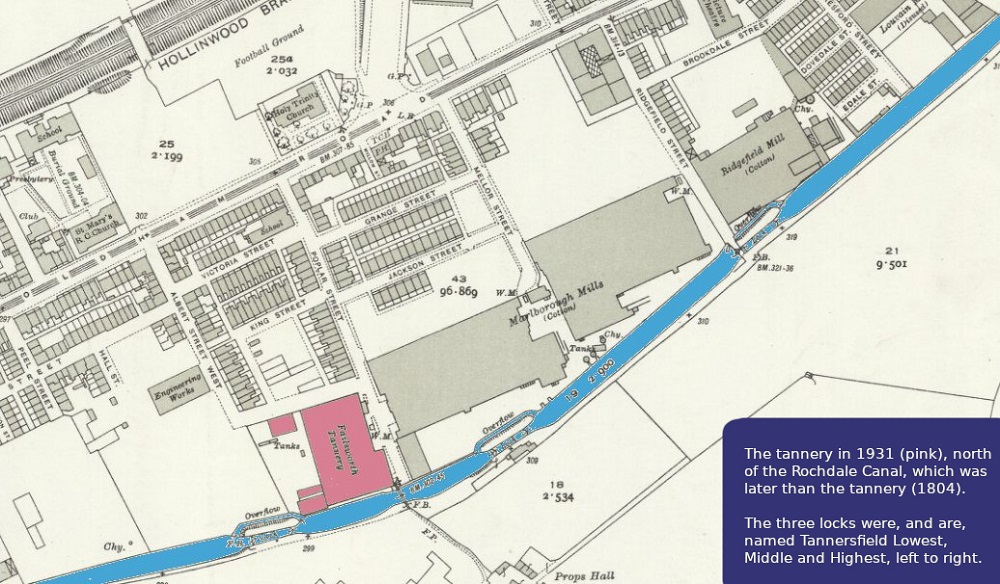 The tannery continued to be listed in telephone books up to 1930, but appears to have closed by 1935. Nothing now remains: the Home Guard Club and wooden garages were built on the site in the 1960s, with bungalows and flats added later. The leather trade is still with us, of course, now utilising different, largely mechanised, processes, but there is still one traditional oak bark tannery at Colyton in Devon.
The tannery continued to be listed in telephone books up to 1930, but appears to have closed by 1935. Nothing now remains: the Home Guard Club and wooden garages were built on the site in the 1960s, with bungalows and flats added later. The leather trade is still with us, of course, now utilising different, largely mechanised, processes, but there is still one traditional oak bark tannery at Colyton in Devon.
Further information on the tanning process and England’s last traditional tannery can be found here at: J&FJ Baker & Co